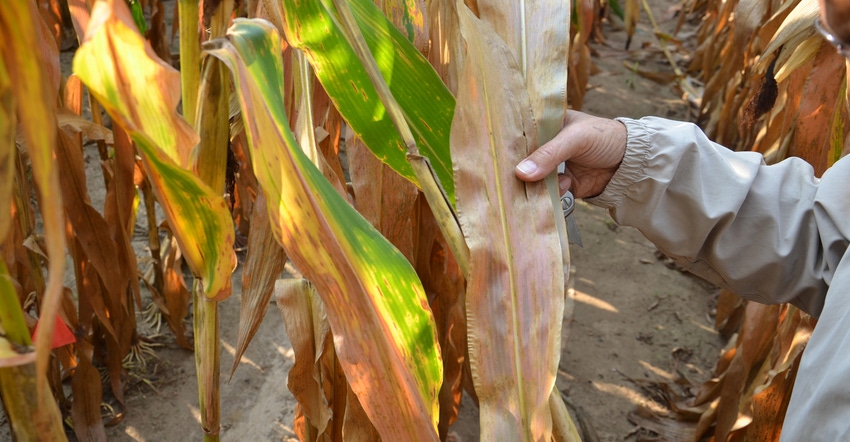
Contestants in the Indiana 4-H and FFA crops judging contest take a quiz to see how much they know about crop production. Many of the answers can be found in the Purdue University Corn & Soybean Field Guide, prepared by the Purdue Crop Diagnostic Training and Research Center each year. Corey Gerber, a Purdue agronomist, heads up the center and publication of the guide.
It’s an open-book test for students. So grab your Purdue Corn & Soybean Field Guide, and use it as you take this quiz. Some questions are similar to those students are expected to answer.
See if you can earn Master Crop Wizard status. No peeking early at answers!
Corn knowledge
1. Corn flea beetles can transmit this disease:
a) gray leaf spot
b) Stewart’s wilt
c) Goss’s wilt
d) Southern rust
e) smut
2. You would scout for armyworms and fall armyworms at the same time of year.
True or false?
3. The second brood of European corn borer is easier to control than the first brood.
True or false?
4. Which of these insects does not overwinter in Indiana?
a) black cutworm
b) corn borer
c) rootworm
d) wireworm
5. This insect can have up to three broods per year:
a) rootworm
b) Japanese beetle
c) black cutworm
d) European corn borer
6. The maximum and minimum temperature limits used to figure growing degree days are:
a) 80 degrees F and 40 degrees F
b) 86 degrees F and 40 degrees F
c) 86 degrees F and 50 degrees F
d) 90 degrees F and 50 degrees F
7. There have been 785 growing degree days since planting. How many GDDs since emergence?
a) 785
b) 115
c) 670
d) 500
e) not enough information given
8. Corn planted June 5 vs. May 5 needs about how many fewer GDDs to mature?
a) 200
b) 20
c) 300
d) same amount
9. If 670 GDDs have accumulated since emergence, how many leaf collars would you expect corn to have?
a) 5
b) 6
c) 8
d) 10
e) a whole bunch
10. Corn moisture at black layer is about:
2) 20% to 25%
b) 15% to 20%
c) 40% to 45%
d) 30% to 40%
Soybean knowledge
11. Group 00 soybeans are typically grown in:
a) Indiana
b) Georgia
c) northern Michigan
d) northern Minnesota
12. If you farm south of U.S. 150 in Indiana, you would likely grow only Group 2 soybeans.
True or false?
13. At the R6 stage of growth, soybeans are at full pod.
True or false?
14. At the VE stage of growth, which soybean plant parts are aboveground?
a) cotyledons and growing point
b) only cotyledons
c) only growing point
d) only hypocotyl
15. The best time to apply fungicide on soybeans to get the most return is at:
a) VE
b) V5
c) R3
d) R5
e) fungicide on beans never pays
16. The saying “His bark is worse than his bite” fits which soybean insect best?
a) Japanese beetle
b) bean leaf beetle
c) ladybug
d) Mexican bean beetle
17. A soybean insect most likely to attack after a long dry spell is:
a) spider mite
b) green stinkbug
c) bean leaf beetle
d) wireworm
18. When soybean nodules are actively fixing nitrogen, they are this color inside:
a) black
b) green
c) yellow
d) pink
e) blue
19. Cercospora leaf blight produces what color of seed?
a) orange
b) purple
c) brown
d) green
e) normal
20. Sclerotinia stem rot is the formal name for:
a) white mold
b) black mold
c) phytophthora
d) purple seed stain
e) red mold
Answers: 1) b; 2) false; 3) false; 4) a; 5) d; 6) c; 7) c; 8) a; 9) c; 10) d; 11) d; 12) false; 13) true; 14) a; 15) c; 16) a; 17) a; 18) d; 19) b; 20) a
Designations: 17 to 20 right, Master Crop Wizard; 13 to 16 right, Crop Guru; 9 to 12 right, Crop Apprentice; 5 to 8 right, Crop Grower in Training; 0 to 4 right, Crop Beginner
About the Author(s)
You May Also Like




